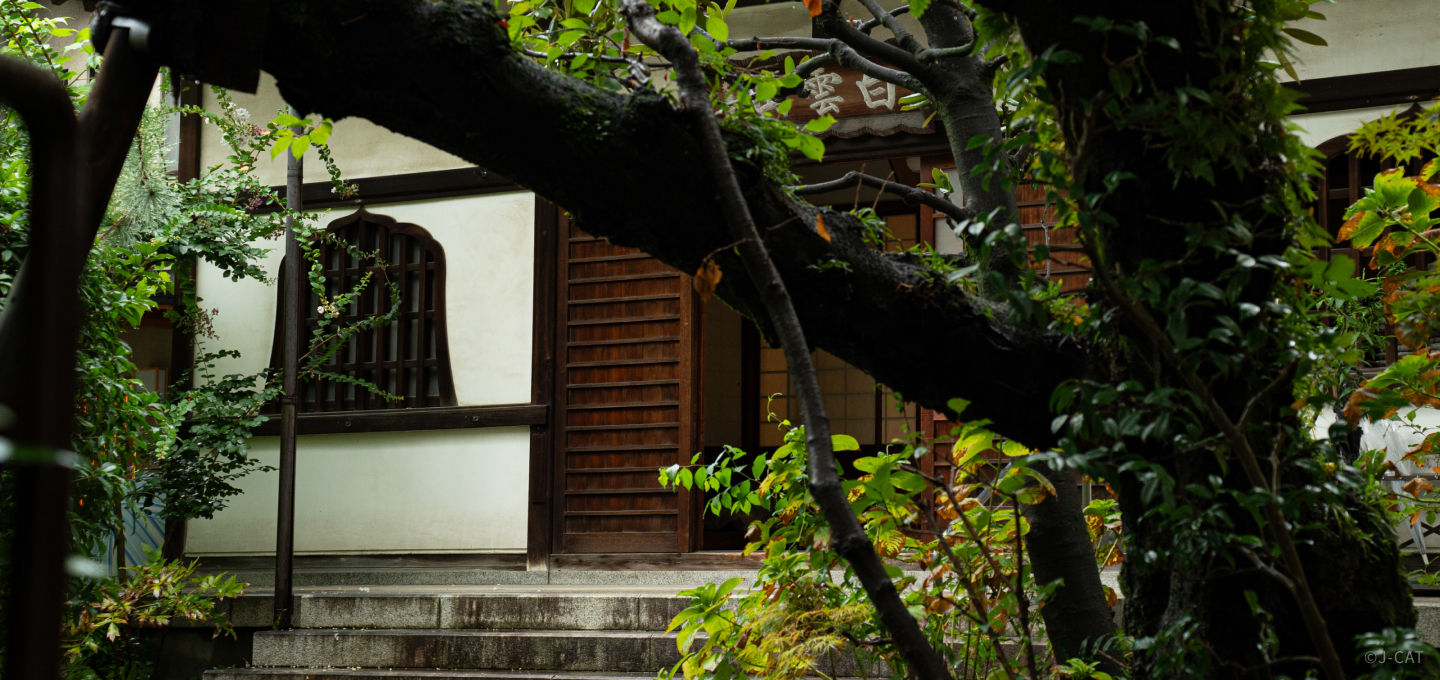
Special Experience
Tokyo
Shape Up Your Strokes through Japanese Calligraphy with a Sumi Artist at the Zen Temple of Kinryuji in Asakusa
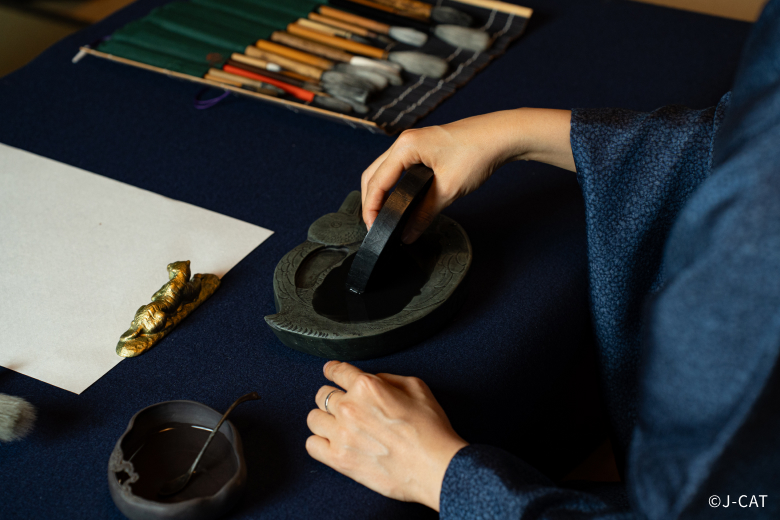
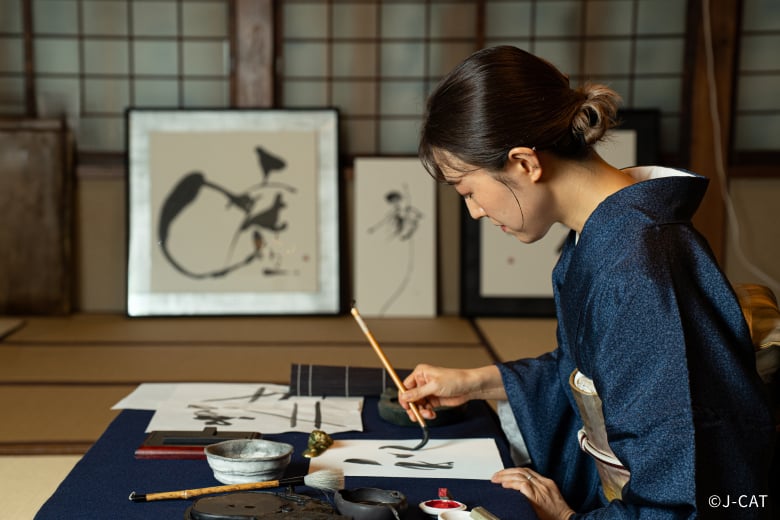
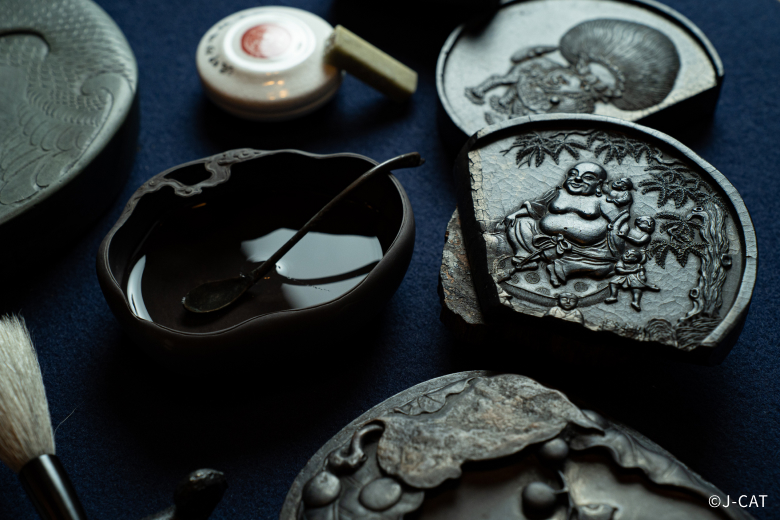
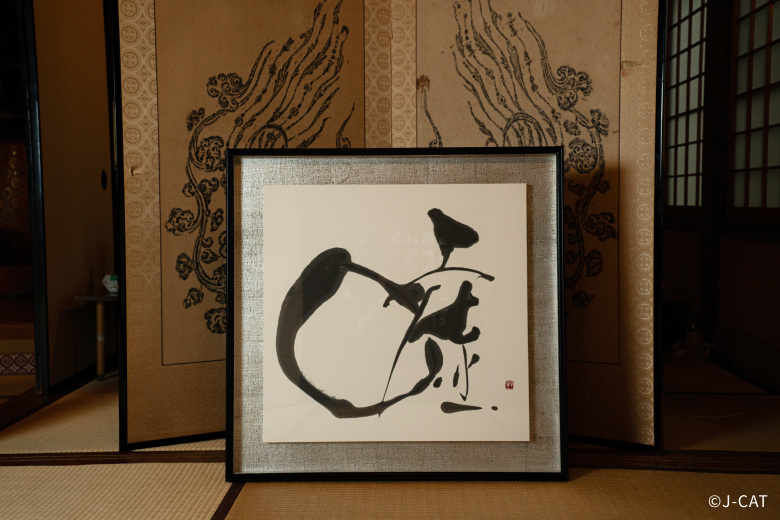
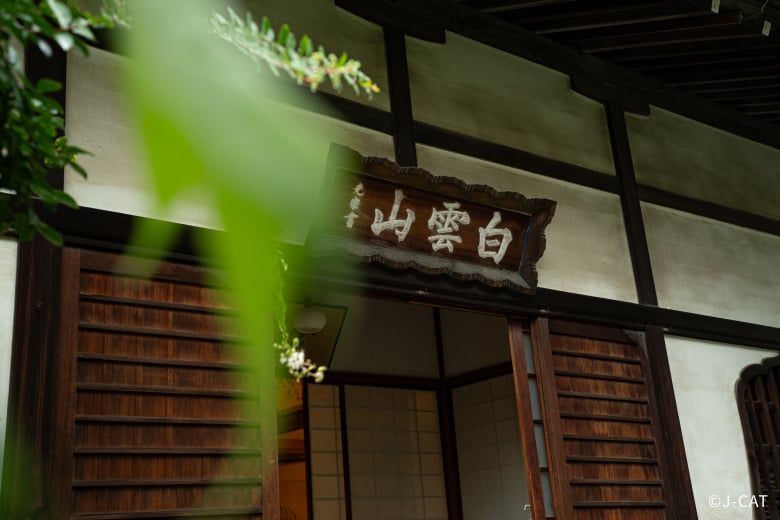
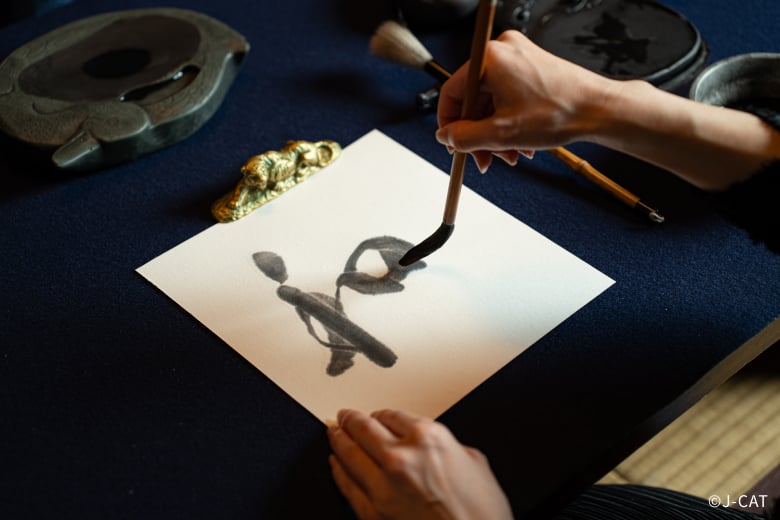
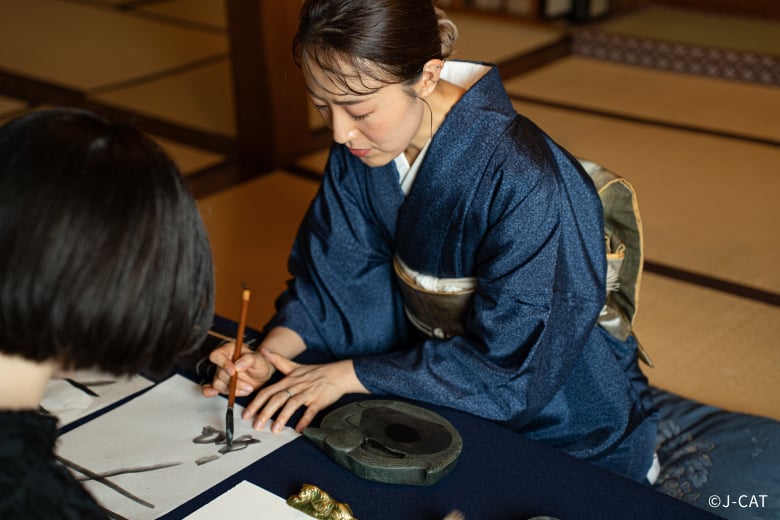
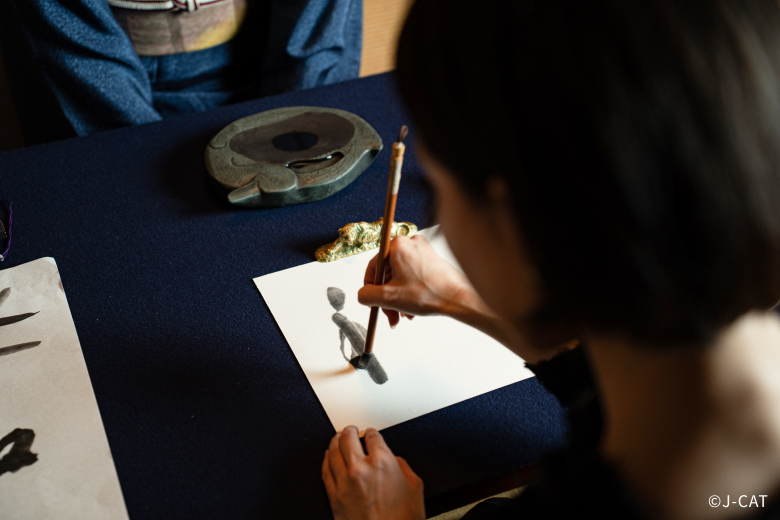
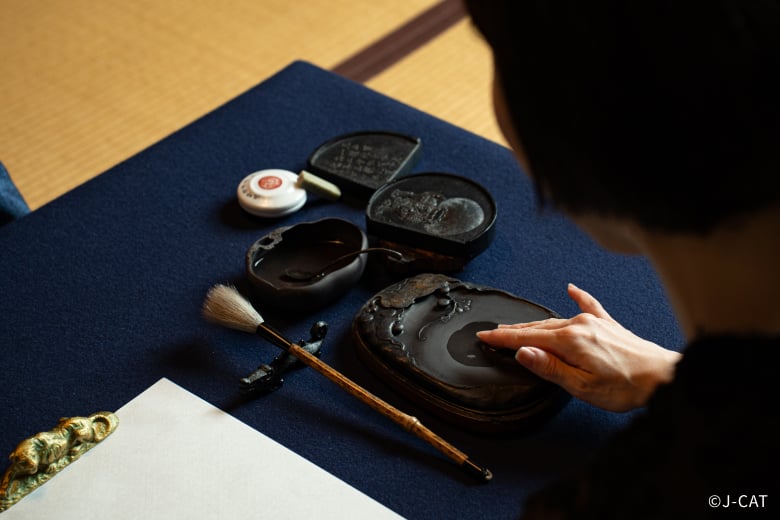
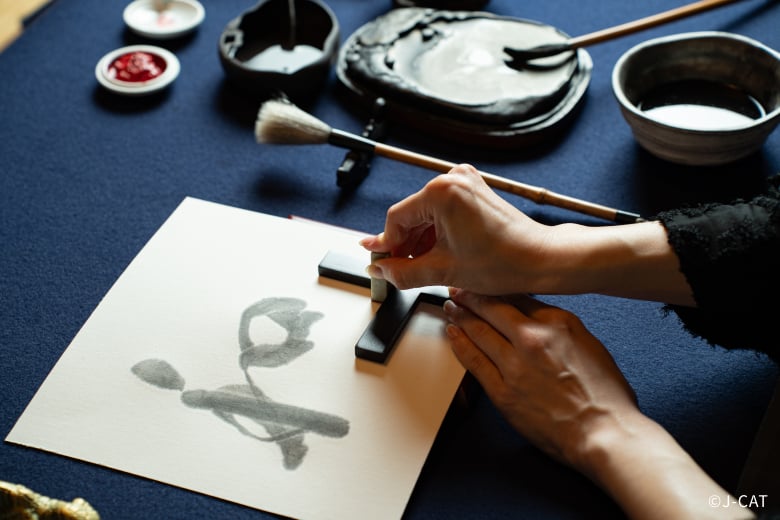
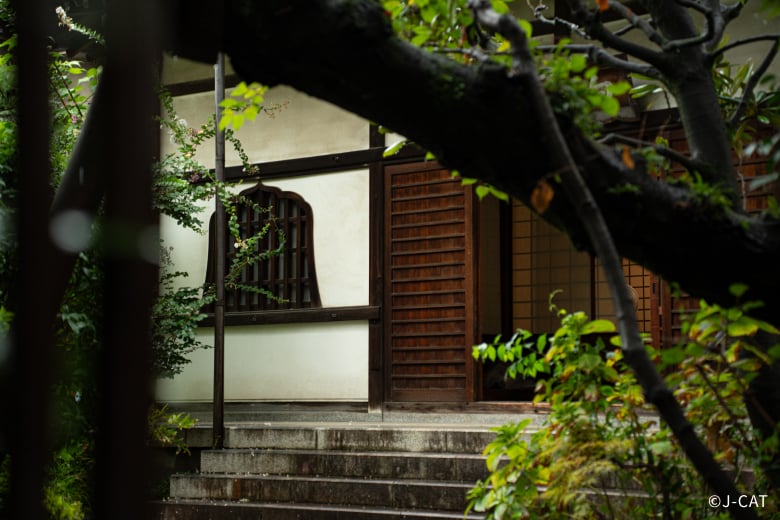
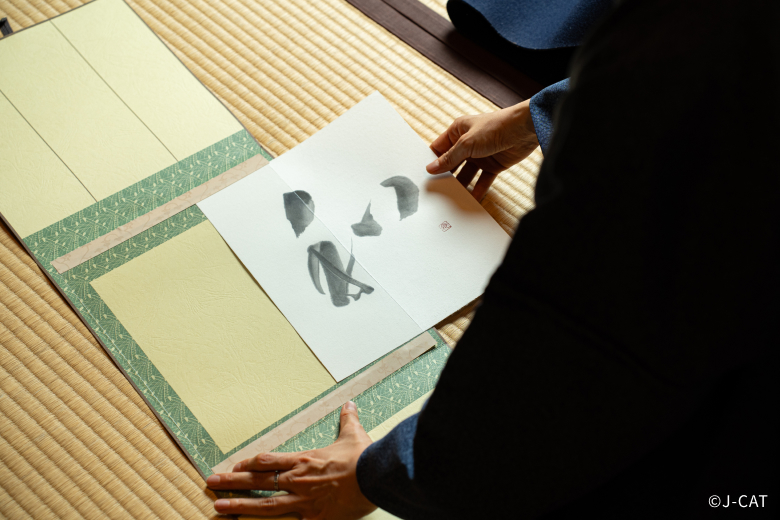
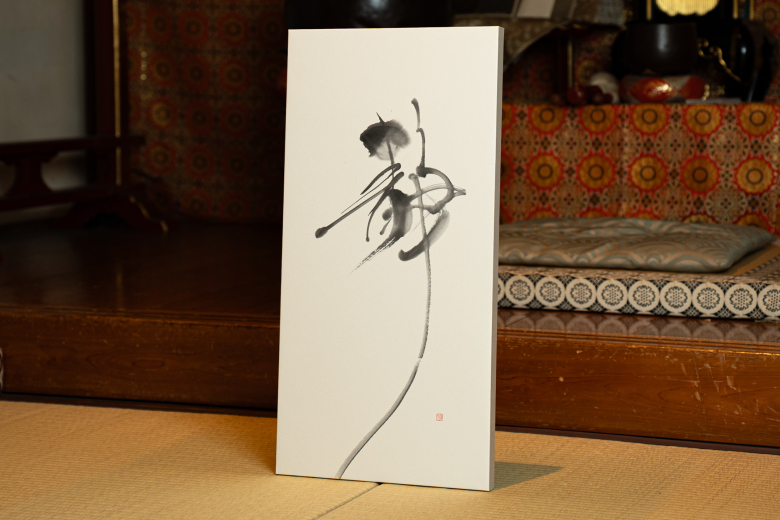
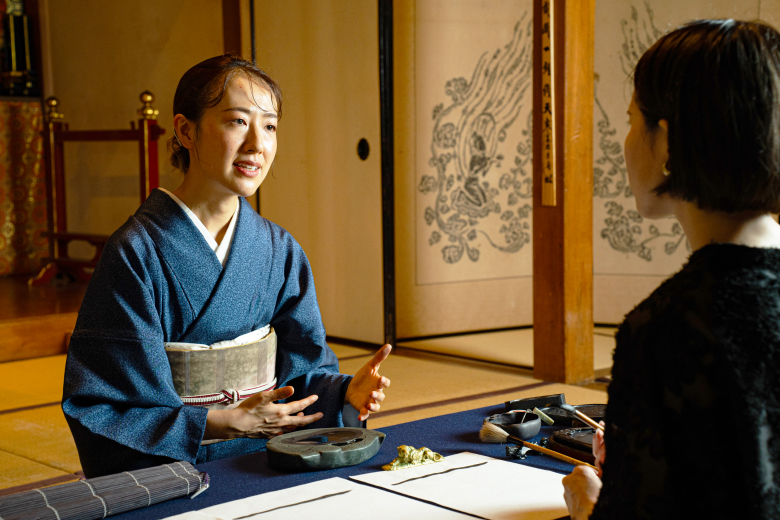
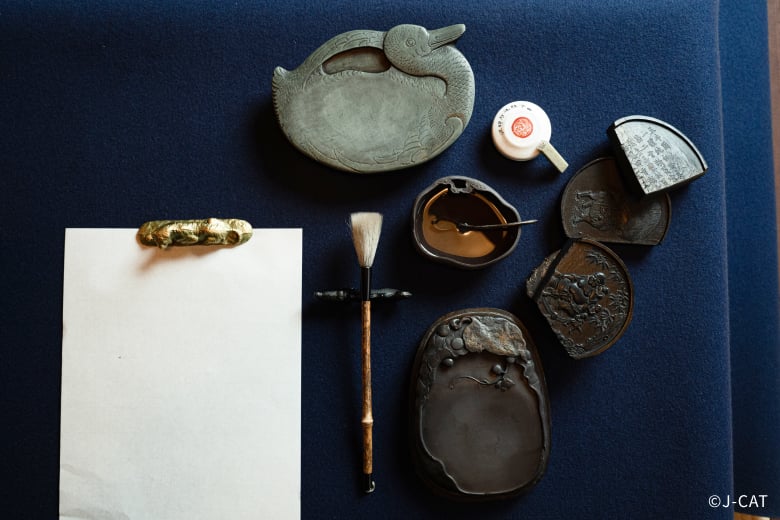
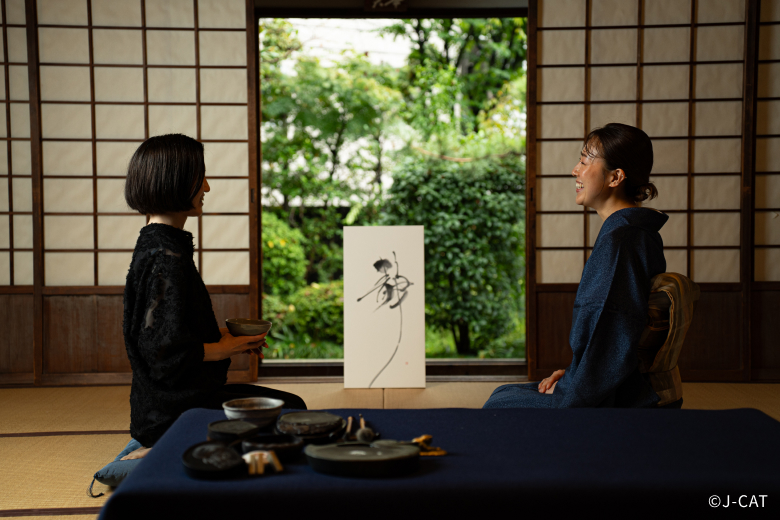
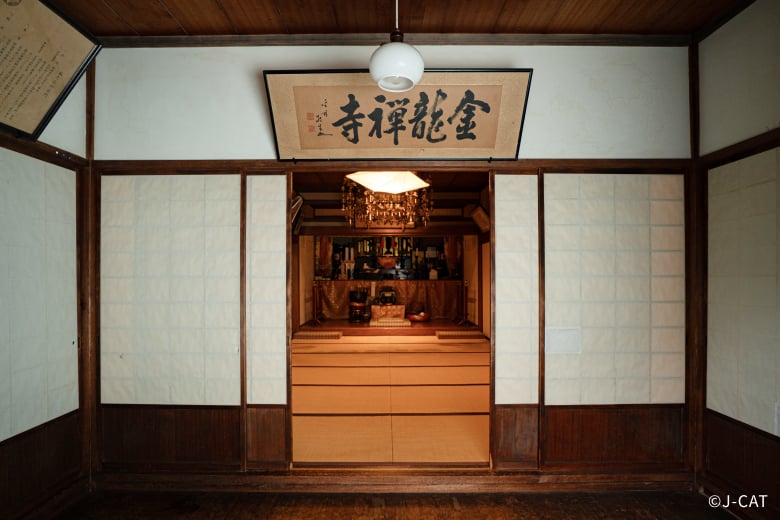
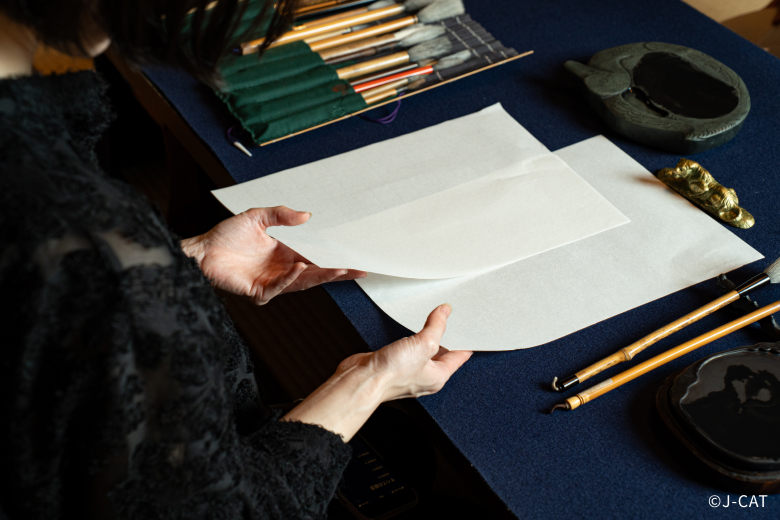


















Overview
Working with tools approximately a century old, internationally renowned Japanese calligrapher Koka Ono guides guests in this exclusive Wabunka calligraphy experience at Zen temple Kinryuji in Tokyo’s Asakusa district. Produce a piece of traditional calligraphy with your own hand using antique sumi ink and inkstones from China, the birthplace of the art form. Conjure a meditative moment as you infuse your day with beauty through the delicate hues of the ink, and with each stroke draw closer to both the scenery before your eyes and the feelings within.
Key Features
・Calm your inner world through calligraphic expression at Kinryuji, a tranquil Zen temple in Tokyo’s Asakusa district
・Delight in the rare privilege to learn this deeply spiritual art from master calligrapher Ono Koka – who does not normally offer instruction
・Illuminate your understanding of the tools of the art – brushes, ink, inkstones, and paper – before using them to express your inner world through ink, then take your completed artwork home with you on the day
Tokyo
120mins
from ¥45,300 /person
1 - 4 participants
Available in English
Cancel free up to 5 days prior
Details
An Asakusa Temple with a Four-century Pedigree Linked to Japan’s Last Great Unifier
Said to have been founded in 1611 with the backing of Zen master Nanden Soyoku, Kinryuji is a Rinzai Zen Buddhist temple. The temple’s founder was Princess Kame, eldest daughter of the great Shogun Ieyasu Tokugawa who consolidated Japan’s final unification in 1603 after nearly a century and a half of tumultuous civil war. Though situated just off a main street in the popular tourist hub of Asakusa, it sits on quiet grounds lush with greenery and awash in the spirit of Zen, offering tranquil sanctuary from the clamor of the city.
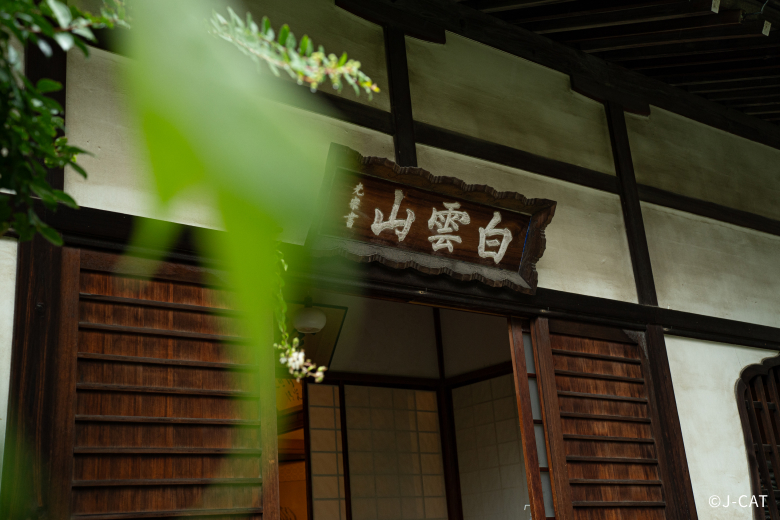
Seasonal foliage adorns the temple grounds
The original Kinryuji was built in Tokyo’s Hatchobori area and later moved to Asakusa. The current structure was rebuilt after the destruction of the temple in the consecutive calamities of the 1923 Great Kanto Earthquake and the 1944-45 Tokyo Air Raids of the Second World War.
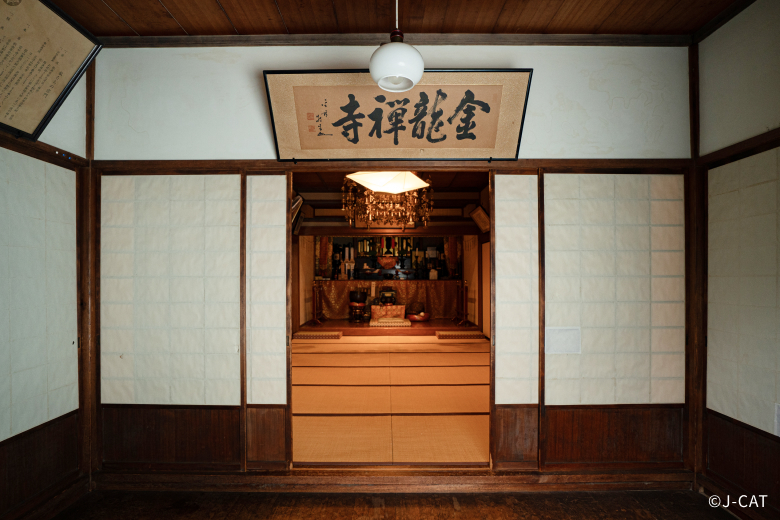
A profound and otherworldly atmosphere permeates the main hall
Koka Ono, a Sumi Ink Artist and Master Calligrapher Captivated by Antique Chinese Implements
Experience instructor Koka Ono is a shodo master and sumi ink artist whose path as such began at the age of eight. A chance brush with antique Chinese ink and inkstones from a century in the past captured her young heart, drawing her eye to the profound chromatic depth of the ink and the beauty of the calligraphy created from it. Ever since then, she has strived to create works centered in the way of hitsu-boku-ken-shi – a term referring to the four tools of calligraphy – brush, ink, inkstone, and paper – and their philosophical and creative significance.
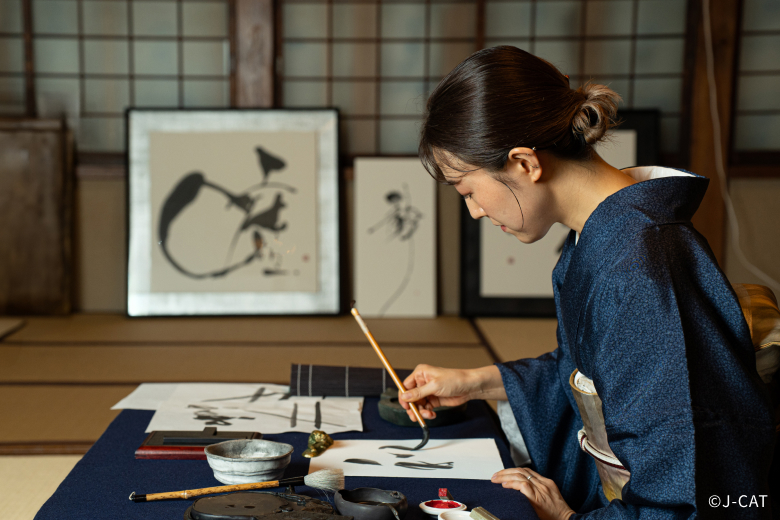
Ono first took up the calligrapher’s brush in childhood
Water, solid sumi ink, and inkstone are brought together to produce the calligrapher’s desired color, which is then applied to the pure white of the paper. Ono finds great beauty in this process, and strives to create “art that drives people.” In addition to taking custom orders, Ono has held galleries in France and Switzerland, solo galleries in Japan, as well as commercial exhibits in the model rooms of a leading electric car manufacturer. Ono normally does not take students or offer instruction, making this special Wabunka experience a rare and truly exclusive opportunity to be part of a master’s process.
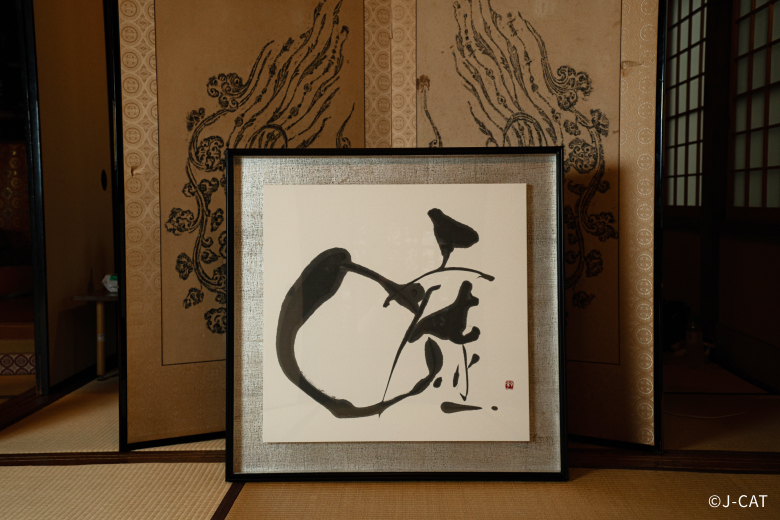
In Ono’s words, “The inner me is projected into my calligraphy”
Hitsu-boku-ken-shi, as Told by Ono
The experience unfurls with a talk on the historical and cultural background of the Hitsu-boku-ken-shi philosophy, which takes its name from the four essential tools of the art – literally “brush-ink-inkstone-paper.” Since the times of ancient calligraphy, these four tools have been treasured and revered. This is a tradition Ono maintains. That’s why she insists on guests “experiencing the real thing,” using only genuine antique art supplies from China – where the roots of this art form originate. Soak up the rich tradition and history of precious ink and inkstones that have reached the present from hundreds or even thousands of years in the past.
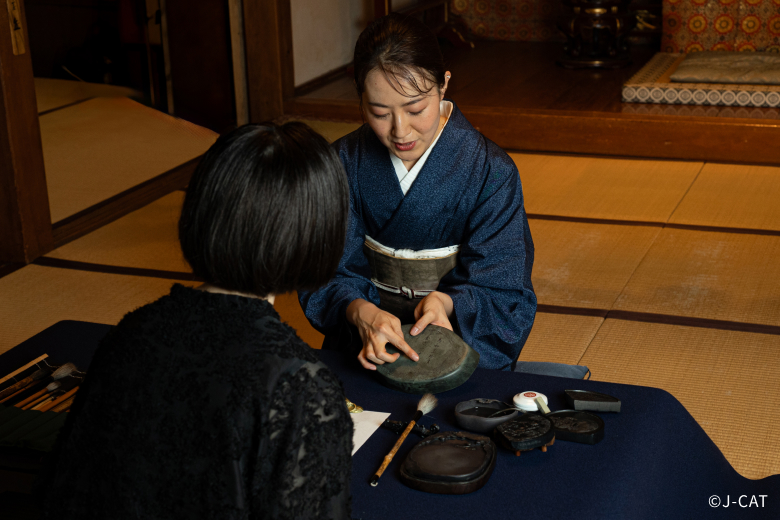
The historical period of each tool’s creation can be inferred from its material, texture, and design, explains Ono
With Ono’s commentary to guide your attention, compare two handmade paper varieties and one machine-made. A closer look – a stroke of the fingertips – and the subtle differences in thickness, pattern, and color reveal themselves. Putting inked brush to their surface further reveals differences in the ink’s shade, bleed, and spread on each.
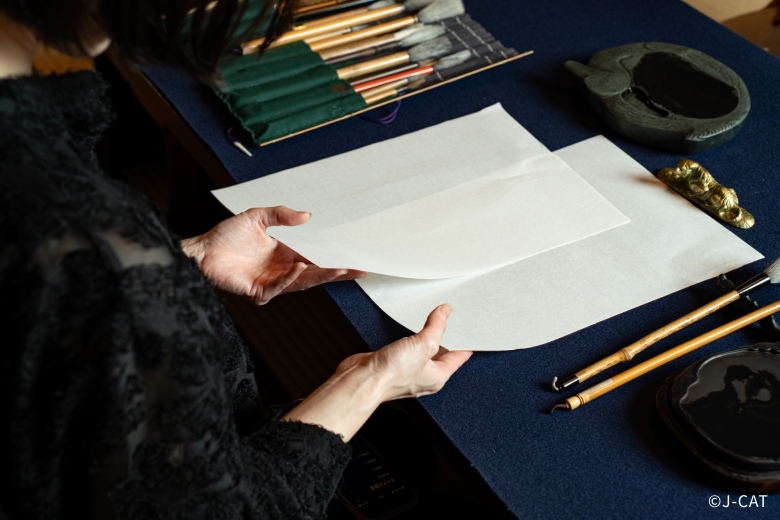
The paper types are profoundly different from one another, and inking them is joyous fun
You’ll also have the opportunity to experiment with brushes of various thickness and firmness. There are endless combinations of the various types of brushes, ink, inkstones, and paper, with chances to discover harmony and dissonance within this endlessly fascinating art.
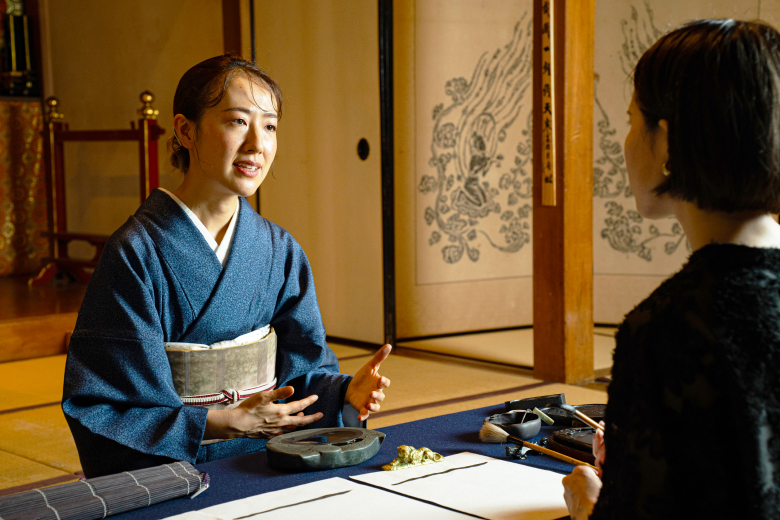
Ono conveys her deep passion for calligraphy and its tools through her work and stories alike
Grinding Sumi: “As the Ink’s Color, so the Heart’s”
Of all the vital steps in the calligraphic process, Ono holds the grinding of the ink to be the most essential. Today, ready-made liquid ink is widely available in stores, meaning that for many learning traditional calligraphy for the first time, this foundational step is skipped altogether. However, Ono holds that the unique charm of antique sumi sticks ground and mixed by hand – to a shade unique to both the inkstone and the person doing the grinding – is incomparable and simply cannot be gotten from premade liquid inks. “Grinding in a hurry yields coarse grit and cloudy ink. As an apprentice, my master always said “as the ink’s color, so the heart’s.”
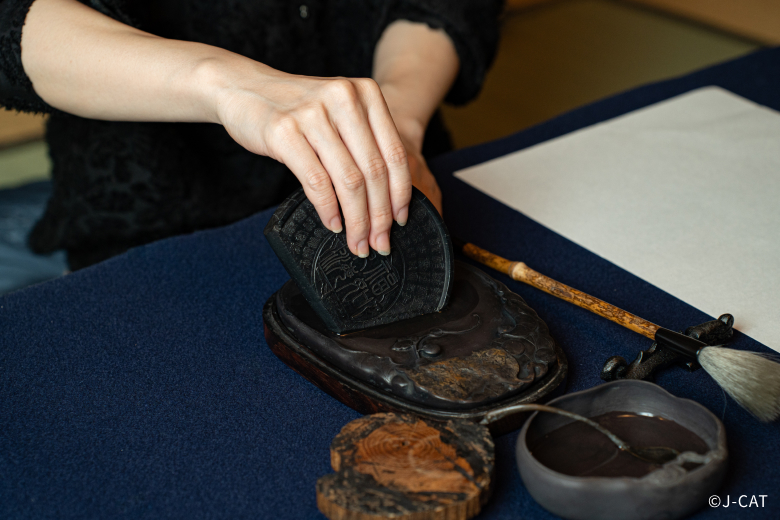
A quiet focus on mixing ink is a rich luxury in our frenetic modern world
This process begins by wetting the inkstone and rubbing in the water evenly with your fingers to bring yourself into closer connection with the tool before you – and to prepare its rough surface prepare for a smooth grind. Key here is grinding the sumi stick against the inkstone with an utterly calm heart and minimal force in the hands. The images that glide up into your mind from deep within your heart during this process guide you toward the subjects to depict in your work.
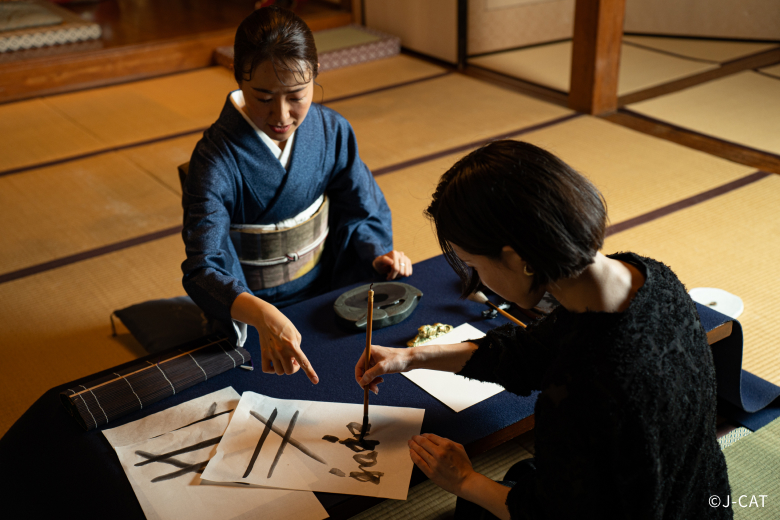
Test the difference between dark and light ink
When the ink is ready, practice drawing basic characters and patterns under Ono’s guidance. Once you have found your subject, it is time to begin your work on sturdy scroll-mounted display paper.
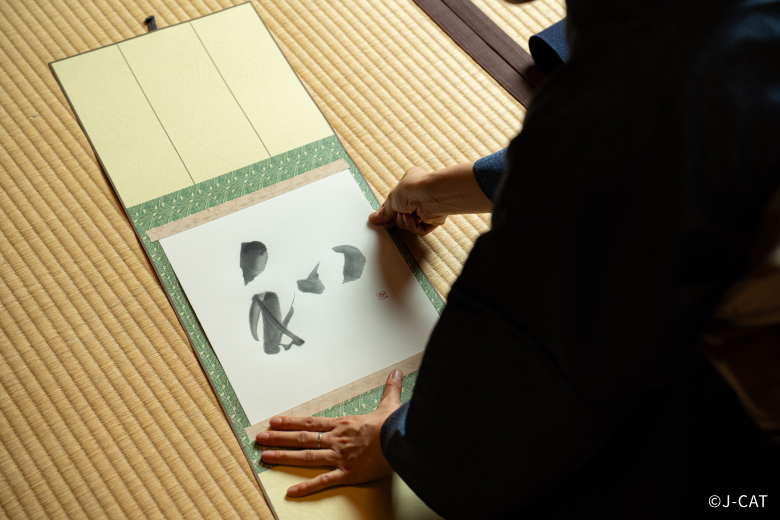
An example scroll-mounted work for home display
In her instruction and in her work, Ono conveys the importance of expressing from the heart rather than relying on shows of technical skill. Each stroke is its own final word. Without any possibility of edit or erasure, each piece is a crystallization of yourself at that single moment in time, an encounter never to be repeated. This is the deep meditative spiritual quality of the art that gives it its affinity to Zen. When your work is complete, seal it with an artist’s stamp and take it home with you.
Shodo Masterpieces with a Side of Matcha
While your finished work dries, treat yourself to some matcha tea and the rare opportunity to enjoy a viewing of Ono’s own calligraphic artwork with commentary from the artist herself. Discover the origins of her inspiration, and the approach she uses to render it on paper. The feelings and thoughts that the master imbues her ink with are a revelation in artistic insight after trying it yourself.
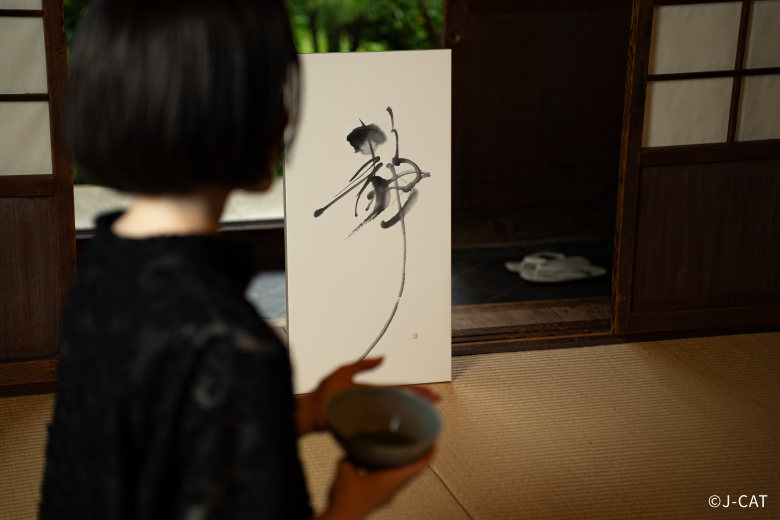
A piece using the kanji character for “stillness” to evoke the dignity of the lotus flower
“I want people to learn to find themselves in the ink,” explains Ono, “and through that to come face to face with their own minds. I think calligraphy offers a profound and stirring world.” She also hopes that people will enjoy taking up the antique tools that have passed through so many hands to reach the present day. It’s not every day you get the chance to dabble in a storied art form to this level of authentic depth in tradition.
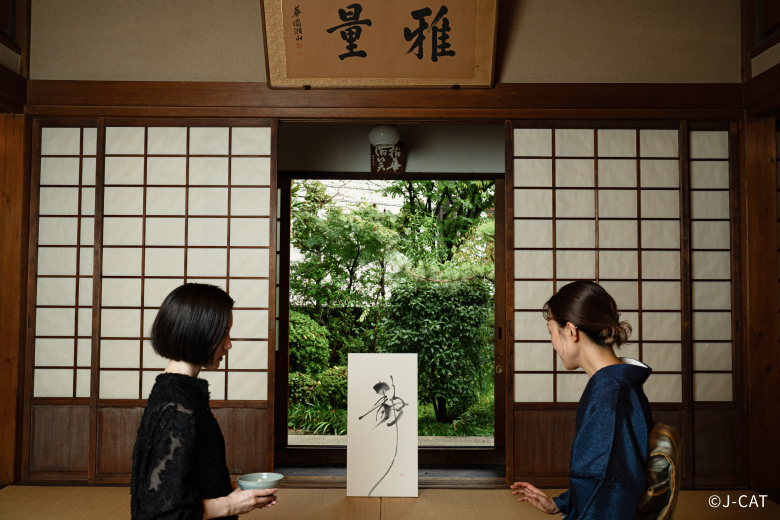
From brush, ink, inkstone, and paper, every stroke tells a story
Koka Ono / Kinryuji
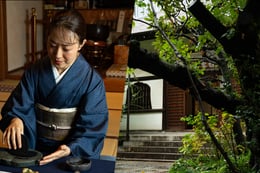
Koka Ono / Kinryuji
Koka Ono
First taking up the calligrapher’s brush at the age of eight, Ono is a master calligrapher with over thirty years of experience who has exhibited across Japan, as well as France and Switzerland. In her work – including custom commissions – she is meticulous about the details and highly particular about the quality and character of her tools. “As the ink’s color, so the heart’s,” is the motto from her own master that echoes through this exacting creativity as she works to produce “art that drives people.
Kinryuji
This Rinzai Sect, Myoshinji School Zen Buddhist temple located in Tokyo’s Asakusa area was founded in 1611 by Princess Kame, the eldest daughter of Japan’s last great unifier: Shogun Ieyasu Tokugawa. Relocated here in 1645 from an original location in Hatchobori, it was brought twice to ruin by the nearly back-to-back historical catastrophes of the Great Kanto Earthquake of 1923 and the Tokyo Air Raids of World War II. Since rebuilt, it is now the site of lush, tranquil grounds that offer a hidden respite from the hustle and bustle of the Asakusa sightseeing district.matcha.
Location
Kinryuji Temple
Taito Ward, Tokyo
Request for booking
Select first preferred date (JST)
December 2025
Sun
Mon
Tue
Wed
Thu
Fri
Sat

Instant Booking

Request Booking

17
Full

17
Unavailable
Tokyo
120mins
from ¥45,300 /person
1 - 4 participants
Available in English
Cancel free up to 5 days prior
Things to know
Contact Us
If you have any questions, please contact us using the form below.
We also accept bookings from corporate clients and travel agencies.